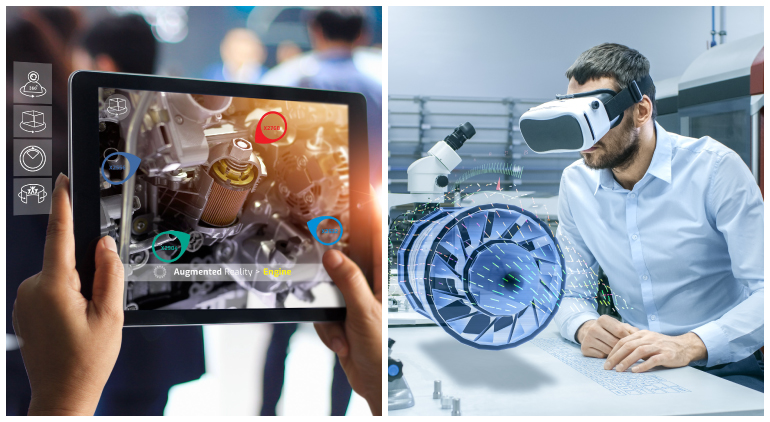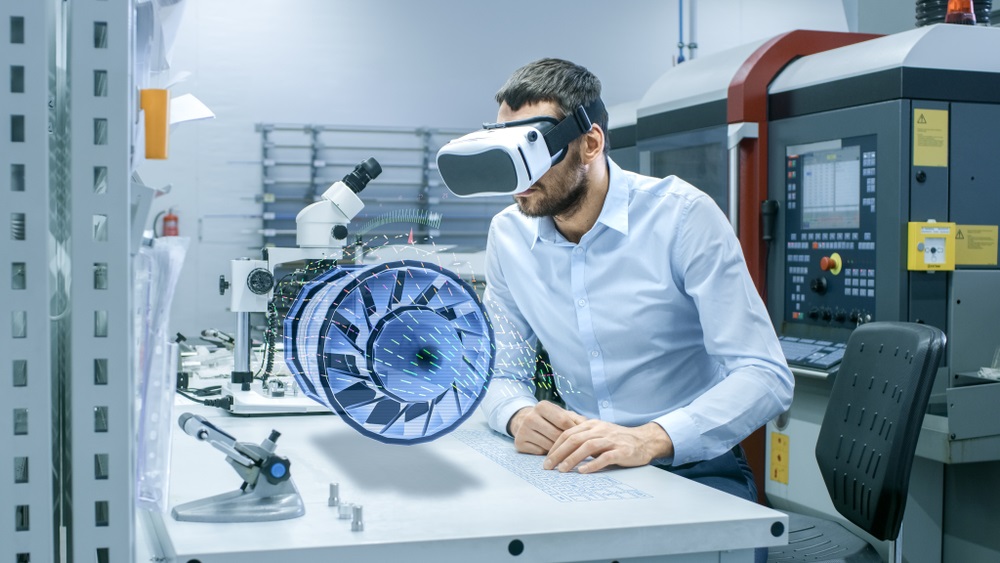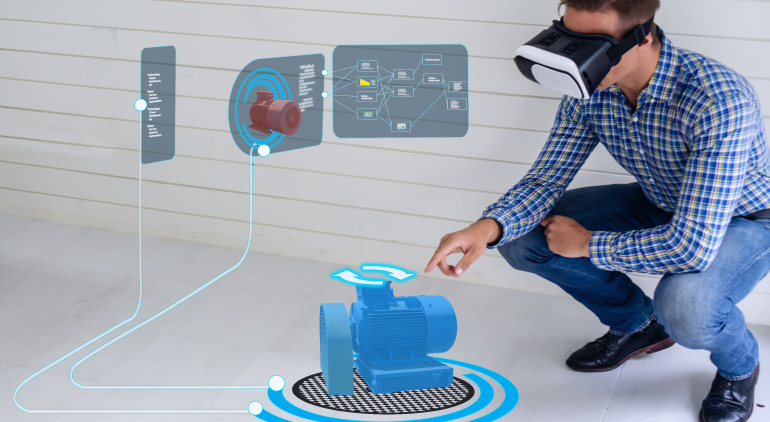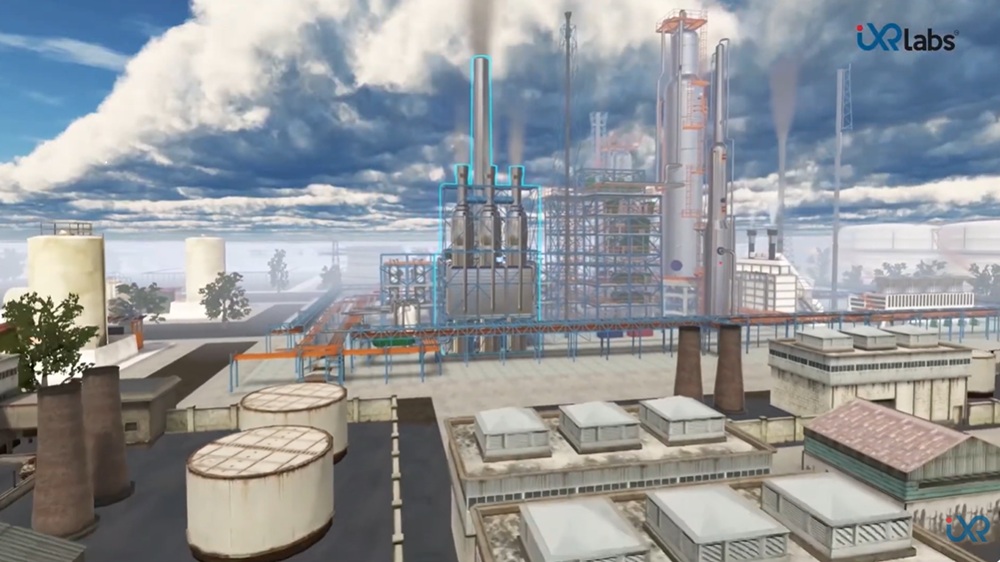How Augmented and Virtual Reality Can Be Used to Train Engineering Students

Computer technologies like Augmented Reality (AR), Mixed Reality (MR), and Virtual Reality (VR) have taken over a significant portion of industries, segmented under the tertiary sector. Retail and entertainment industries have especially marked a positive growth since the implementation of these immersive technologies.
However, since AR and VR are dominating the entertainment industry more through its unique and captivating gamification methods, many believe that this technology will not fit into the educational sector.
A common belief is that immersive technologies may, sometimes, be far too graphic or may be extremely distracting for students. Parents compare.
VR processes in video games and cannot imagine the possible benefits immersive technology can provide to students.
Every new technology that is introduced to the market has faced a line of questioning, from when Steve Jobs first came up with personal computers to when Apple launched wireless earphones.
However, you later see people accepting the technology once they realise how advantageous the technology is. Similarly, AR and VR technologies have faced scrutiny.
In spite of this, AR and VR has managed to make its way into educational institutes and so far, we have only seen this union as a success!
More advanced and specific educational spheres such as engineering can benefit gravely from AR and VR technologies. Engineering, whether chemical or technological, is a field that requires students to keep up with the latest technologies, from VR to Artificial Intelligence (AI).
Augmented reality engineering projects, such as simulating complex structural designs or providing hands-on training in virtual environments, offer students invaluable opportunities to apply theoretical knowledge to real-world scenarios, fostering a deeper understanding of engineering principles and enhancing their problem-solving skills.
However, AR and VR do not only form the syllabus for engineering. These technologies make learning and training for engineering students drastically efficient, engaging, and thorough!
1. VR Labs for Engineering and VR in Engineering
VR lab for engineering students is perhaps the most valuable benefits! VR labs provide millions of opportunities to engineering students who are just starting out or are to graduate in a year. Numerous companies are releasing AR and VR based laboratories.
One such example of a VR lab is “Labster”. This VR powered application can be installed on any smart device and allow students to carry out various research and experimentation. Such VR in Engineering labs allow students to do the most basic experiments like oxidising iron to study redox reactions or more complex research such as testing the running of engines.
Such VR labs for engineering students can help them break away from the typical restraints that students face in real laboratories. With VR labs, students do not have to worry about funding of equipment, pause in experimentation and research due to tardiness of delivery of equipment and general wait time between various processes.
With VR labs, engineering students will not be bound by time and can fast forward the simulations to see the end result of their process. The students will not have to worry about space as well.
Many a times, labs are too small and cannot fit several students and their respective experiments. With VR labs, students will not have to worry about this. VR labs, contrary to belief, forms a safe space for collaborations and group work through fun VR avatars.
 Get the App from Meta Store: Download Now
Get the App from Meta Store: Download Now
2. Enhancing Skills with Augmented Reality in Engineering
Google conducted an experiment that measured success in learning practical skills through VR. The experiment had two groups. Both groups were to brew a cup of java.
The first group was taught through VR, wherein, they had to physically make the coffee in the simulated versions that was visible to them through their VR headsets. The second group learned to make the coffee by simply watching tutorial videos on YouTube.
From the two groups, the first group performed more efficiently supporting that learning skills through VR can yield more efficient results than videos!
Hence, VR and AR in engineering education is necessary for training engineering students. Since, engineering is such a practical-based discipline, a lot of the curriculum involved skill development.
These can include designing products or engines, operating them, maintaining them, and repairing them. Students can train with simulated versions through VR headsets, which can train sufficiently enough for when they really need to do it.
3. Efficiency and Augmented Reality in Engineering Projects

AR in engineering education enhances efficiency by allowing students to understand and engage with simulated projects in the real world.
This includes augmented reality engineering projects, providing hands-on training and a deeper grasp of complex engineering concepts. It bridges the gap between theory and practical application, equipping students with valuable skills for their future careers.
However, what has been most helpful to engineering students is the invention of AR glasses. AR glasses can scan machinery and engines for engineering students and present an encyclopaedia’s worth of information for students.
Furthermore, as students are working with equipment, students can access tutorial videos on how to carry out a skill or receive audio instructions.
This saves a lot of time, as students do not have to read endless manuals page by page and can particularly access each section as they work on it. It makes engineering students’ training process far more efficient.
"Unlock the future of engineering education! Dive into immersive learning experiences with augmented and virtual reality today and transform the way students train."
4. Safety
Working with engines, including augmented reality engineering, can be extremely dangerous, and safety Personal Protective Equipment (PPE) can sometimes fall short. No matter how cautious a student is, a little bit of negligence can lead to injury of the students.
With engineering, however, actually practicing skills, including augmented reality engineering, is important and part of earning the degree at the end.
Hence, VR in engineering can be the best possible PPE. Students can practice augmented reality engineering skills just like in a similar environment and not have to engage in unnecessary risk during their training stages.
Finally, AR and VR are all future technologies that everyone will have to soon adapt to. However, there is still time before it enters our daily lives and our workplaces.
Yet, it is important to understand that this fast-growing technology is a necessity for engineering students to work with NOW, so that they can develop their skills and be ahead of the digital curve. Hence, training engineering students today can help us in the future

.png)




